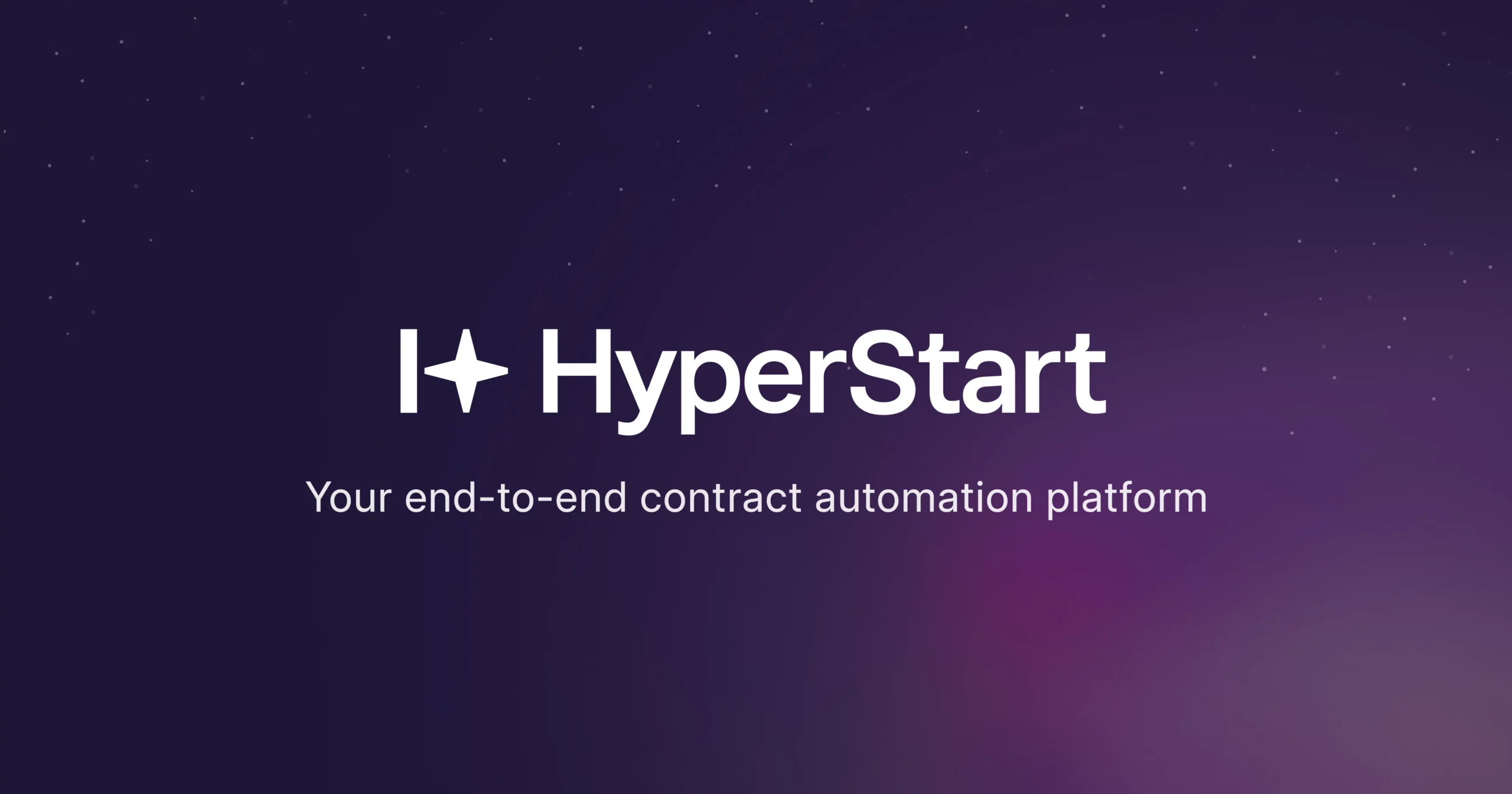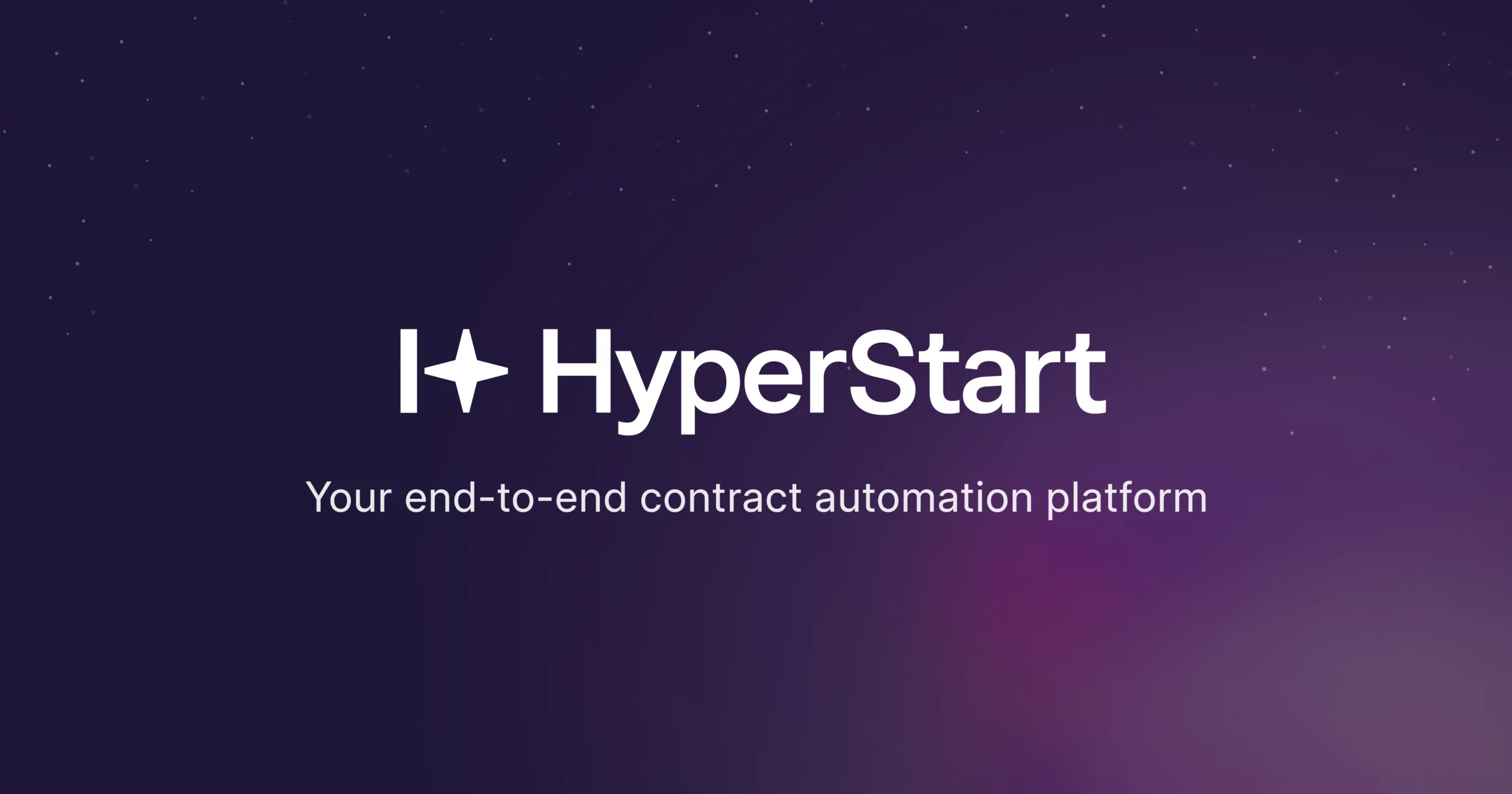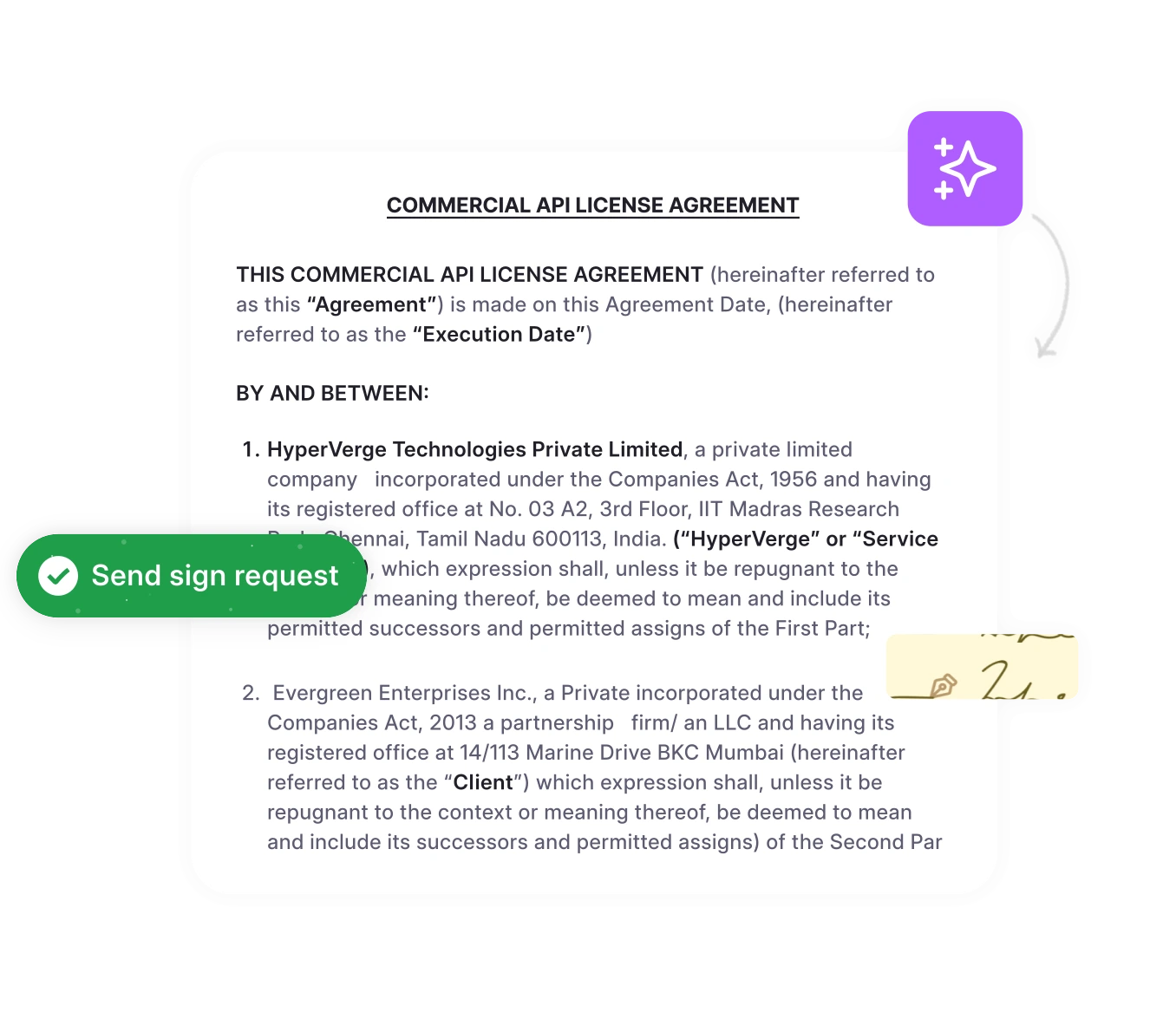Contract ambiguity arises when the language in an agreement can be interpreted in multiple ways, creating uncertainty about the parties’ obligations. This lack of clarity can turn straightforward business relationships into sources of confusion, disagreement, and costly contract disputes.
Whether it’s a vendor contract that defines “reasonable support” without specific parameters, or a partnership agreement with vague performance metrics, ambiguous language creates risks that extend far beyond the contract itself. When parties interpret the same clause differently, it can lead to missed expectations, delayed projects, and damaged business relationships.
Understanding contract ambiguity—what causes it, how courts handle it, and most importantly, how to prevent it—is essential for protecting your business interests and maintaining strong partnerships.
What is contract ambiguity?
Contract ambiguity occurs when the language in an agreement is unclear, vague, or open to multiple reasonable interpretations. According to Black’s Law Dictionary, “a contract or provision in a contract is ambiguous if it is reasonably susceptible to more than one interpretation or construction.”
This means that ambiguity isn’t just about parties disagreeing over contract terms—it’s about language that genuinely allows for different, equally valid interpretations. For example, if a contract states that a service provider will deliver “reasonable support” after implementation, both parties might have vastly different ideas about what constitutes “reasonable.”
Types of contract ambiguity
| Type of Ambiguity | Definition | Example |
| Patent Ambiguity | Evident directly on the face of the contract. Anyone reading the document can see unclear or contradictory language. | A contract specifies both “30 days” and “45 days” for the same deadline in different sections. |
| Latent Ambiguity | Becomes apparent only when applied to real-world circumstances. The language seems clear initially, but allows multiple interpretations once external factors are considered. | A contract refers to “dollars” without clarifying whether it means US or Canadian currency when both parties operate in different countries. |
Now that we understand what contract ambiguity looks like, let’s examine the serious risks it can create for your business operations.
What are the risks associated with ambiguity in a contract?
Ambiguous contract language creates multiple layers of risk that can impact your business financially, operationally, and strategically. These 3 risks often compound over time, making early identification and prevention crucial.
1. Financial risks and unexpected costs
When contract terms are unclear, financial disputes become almost inevitable. One party might interpret a payment clause to mean they owe less than the other party expects, or ambiguous language around expenses could lead to unexpected cost overruns. These disagreements often require expensive legal intervention to resolve.
Legal disputes stemming from ambiguous contracts are particularly costly because they typically involve complex interpretation issues rather than straightforward breach claims. Courts must analyze intent, industry standards, and surrounding circumstances, which extend litigation timelines and increase attorney fees.
Ambiguity in bill of quantities descriptions alone triggers about 34.2% of construction contract disputes, which result in cost overruns typically ranging from 15% to 25%, with dispute resolution times averaging around 11.8 months. Dispute resolution fees, such as litigation, forensics, and counsel fees, can average roughly 28.5% of the contested amounts. For example, one project faced over 3 million yuan in extra costs due to ambiguous quantity deviations.
2. Operational disruptions and project delays
Ambiguous performance standards can bring projects to a halt while parties argue over what was actually promised. If a contract specifies “industry standard quality” without defining those standards, disagreements about deliverable acceptance can delay project completion and disrupt business operations.
These delays often have cascading effects throughout your organization. Sales teams can’t close deals dependent on uncertain contract terms, operations teams struggle with unclear service level requirements, and finance teams face difficulties with revenue recognition when contract obligations remain undefined.
3. Relationship damage and compliance exposure
Perhaps most importantly, contract ambiguity can permanently damage business relationships. When parties interpret terms differently, each side often feels that the other is acting in bad faith or trying to take advantage of unclear language.
In regulated industries, ambiguous contract language can create compliance risks that extend beyond the immediate parties. If contract terms related to data protection, financial reporting, or industry-specific requirements are unclear, your organization might inadvertently violate regulatory standards.
Eliminate ambiguity before it costs you
Spot unclear terms instantly with HyperStart’s AI-powered contract review and ensure every clause is crystal clear.
Book a DemoUnderstanding these risks highlights why it’s crucial to know how courts handle ambiguous contracts when disputes arise.
Are ambiguous contracts legally enforceable?
Yes, ambiguous contracts are generally still legally enforceable, but the process becomes significantly more complex and unpredictable.
Courts don’t typically void contracts simply because some language is unclear—instead, they work to interpret the parties’ original intent and enforce the agreement based on that interpretation.
How enforceability works with ambiguous terms
When a court determines that contract language is ambiguous, it shifts from simply reading the written words to actively interpreting what the parties meant. This interpretation process involves examining evidence beyond the contract itself, including negotiations, past dealings between the parties, industry customs, and the surrounding circumstances when the agreement was signed.
The court’s goal is to give effect to the parties’ original intent, even when the written language doesn’t clearly express that intent. However, this interpretive process introduces uncertainty because different judges might reach different conclusions about what the parties meant.
Potential outcomes of judicial interpretation
Courts typically examine several types of evidence when interpreting ambiguous contracts. Parol evidence includes oral discussions, email exchanges, and preliminary negotiations that occurred before the agreement was signed. Industry standards and customs help courts understand how terms are typically interpreted within specific business sectors.
In some cases, courts apply the contra proferentem rule, which interprets ambiguous terms against the party that drafted the contract. This principle assumes that the drafting party had the opportunity to make the language clear but failed to do so.
Understanding how courts approach interpretation leads us to examine the specific methods they use to resolve ambiguous language.
How do courts interpret ambiguous contracts?
Courts follow established legal principles and methodologies when interpreting ambiguous contract language. Understanding these 3 approaches can help you anticipate how a judge might resolve disputes and inform your contract drafting strategies.
1. The primary interpretation framework
Most courts begin with the assumption that contracts should be interpreted to give effect to the parties’ mutual intent at the time of contract formation. This means judges look beyond the problematic language to understand what both parties actually intended to agree upon.
Courts generally prefer interpretations that make commercial sense and avoid results that would be unreasonable or lead to forfeiture. If one interpretation would make the contract impossible to perform or create an absurd outcome, judges will typically favor an alternative reading that produces a workable agreement.
2. Textualism versus contextualism approaches
Legal systems use two main approaches to contract interpretation:
Textualism focuses primarily on the plain meaning of the words within the “four corners” of the contract document. Textualist courts limit their analysis to the written terms and avoid considering external evidence unless absolutely necessary.
Contextualism embraces a broader view that considers the circumstances surrounding contract formation. Contextualist courts readily examine parol evidence, industry practices, and the parties’ relationship history to understand the intended meaning of ambiguous terms.
3. Evidence courts examine during interpretation
When resolving ambiguous language, courts systematically examine written communications between the parties, industry testimony from expert witnesses, performance evidence showing how parties actually behaved under the contract, and dictionary definitions as baseline references.
Stay ahead of risky clauses
Flag ambiguous wording, resolve bottlenecks quickly, and close contracts faster with HyperStart’s contextual intelligence.
Book a DemoThis variation in judicial approaches underscores why prevention is far more reliable than hoping for a favorable interpretation after disputes arise.
Key legal principles courts apply
The Four Corners Rule
Courts generally begin with the “four corners rule,” examining only what’s written within the contract document itself. If the meaning can be determined from the contract’s plain language, courts won’t consider outside evidence.
The Parol Evidence Rule
When contracts contain ambiguous terms, courts may allow parol evidence—oral agreements, negotiations, emails, and drafts from before the contract was signed. However, this evidence can only clarify ambiguous terms, not contradict what’s clearly written.
Contra Proferentem Principle
Courts often apply contra proferentem, interpreting ambiguous terms against the party who drafted the contract. This assumes the drafter had the opportunity to clarify language but failed to do so, protecting the non-drafting party
Let’s understand how to avoid ambiguity in contracts.
How to avoid ambiguity in contracts?
Preventing contract ambiguity requires a systematic approach that combines clear contract drafting techniques, comprehensive planning, and modern technology tools. By addressing these 3 potential ambiguities during the drafting process, you can avoid the costs and uncertainties of judicial interpretation.
1. Establish clear definitions and terminology
Every contract should include a definitions section that explains key terms, especially those that might be interpreted differently by different parties. Rather than assuming both sides understand “deliverables” the same way, define exactly what items or services you expect.
When using industry-specific terminology, provide definitions even if you believe both parties understand the terms. What seems obvious to your team might be interpreted differently by the other party, particularly if they operate in different business sectors or geographic regions.
2. Use specific, measurable criteria
Replace subjective language with objective, measurable standards wherever possible. Instead of requiring “high-quality deliverables,” establish specific quality metrics, acceptance criteria, and testing procedures that both parties can verify.
Time-related obligations should include specific dates, deadlines, and time zones rather than relative terms like “promptly” or “as soon as possible.” Financial terms require particular precision—specify currency, payment methods, due dates, and any applicable taxes or fees.
In the Appeal of Parsons Evergreene, LLC (ASBCA No. 58634), Parsons Evergreene faced a dispute over unclear language related to “environmental sustainability” in their design-build contract with the Air Force. The undefined term led to disagreements about contract obligations and ultimately, litigation. To prevent such issues, contractors should ensure that all terms are clearly defined to avoid misunderstandings.
3. Implement comprehensive contract review processes
Establish a systematic review process that includes input from legal, business, and technical stakeholders. Different perspectives help identify potential ambiguities that might not be obvious to any single reviewer.
Create standardized checklists for common ambiguity sources, including undefined terms, contradictory clauses, and vague performance standards. This helps ensure consistent review quality across different contract types and reviewers.
Contract Ambiguity Prevention Checklist
Pre-Drafting Review:
Draft Review Process:
Multi-Stakeholder Review:
Understanding prevention strategies becomes even more valuable when you see how ambiguity problems play out in real business situations.
Real-life examples of ambiguous contracts
Examining actual cases where contract ambiguity led to disputes helps illustrate how seemingly minor language issues can create significant business problems.
1. The “permanent” benefits case
In 2024, UK retail giant Tesco lost a significant legal battle after attempting to revoke employees’ “permanent” pay benefits. The company argued that business conditions required eliminating certain benefits, but the court ruled that the word “permanent” meant precisely that—the benefits could not be terminated.
This case demonstrates how single words can carry more legal weight than parties initially realize. Tesco likely used “permanent” to make the benefit package more attractive during recruitment, but the term created a binding obligation that proved costly when business circumstances changed.
2. Weiss v. State Life Insurance Co. (Canada, 1935)
In this case, the Supreme Court of Canada addressed the ambiguity of the term “dollars” in an insurance policy. The policy did not specify whether the amounts were in U.S. or Canadian currency.
The Court concluded that “dollars” referred to Canadian dollars, considering the context and the fact that both the insurer and the insured were Canadian entities. This decision highlights the importance of precise currency specifications in contracts to avoid ambiguity.
These cases share common characteristics: industry assumptions don’t translate across companies, single ambiguous words can invalidate entire contract management strategies, and ambiguity costs compound over time.
Clear contracts, confident deals
Eliminate vague clauses with HyperStart’s AI review and ensure every term is clear, consistent, and enforceable.
Book a DemoThese real-world examples highlight why modern contract management approaches increasingly rely on technology to identify and prevent ambiguity before it creates problems.
How do CLM platforms help reduce contract ambiguity?
Modern AI-contract lifecycle management platforms address ambiguity through systematic identification, prevention, and resolution capabilities that go far beyond traditional manual review processes.
1. Automated ambiguity detection and flagging
Advanced CLM platforms use artificial intelligence to scan contract language and identify potentially ambiguous terms, phrases, and clauses. These systems recognize patterns associated with familiar ambiguity sources, such as undefined terms, vague qualifiers, and contradictory provisions.
AI-powered analysis can flag instances where contracts use terms deviate from your standard positions like “reasonable,” “substantial,” or “material” without providing specific criteria for measurement. Real-time scanning during the drafting process prevents ambiguous language from making it into final agreements.
2. Standardized clause libraries and templates
CLM platforms typically include libraries of pre-approved contract clauses that have been reviewed for clarity and consistency. These clause libraries help organizations maintain uniform language across different contract types and reduce the risk of introducing ambiguous terms.
Template-based contract generation ensures that standard provisions use tested language that has been refined over time. Version control capabilities ensure that approved language doesn’t deteriorate through informal modifications.
HyperStart’s Advanced Ambiguity Detection
Real-Time Clause Analysis
HyperStart’s AI scans contracts during drafting and flags potentially ambiguous language before finalization. The system identifies vague qualifiers and suggests specific alternatives based on your industry and past successful contracts.
Contextual Risk Assessment
Unlike basic keyword searches, HyperStart’s AI understands legal context. It distinguishes between “termination for cause” and “service termination,” preventing the ambiguity issues that plague simpler contract tools.
Integration with Legal Workflows
HyperStart’s ambiguity prevention integrates seamlessly with existing legal processes—Salesforce for deal tracking, SharePoint for document management, and DocuSign for execution—ensuring clarity is maintained throughout the entire contract lifecycle.
3. Data extraction and obligation tracking
Advanced CLM platforms automatically extract key terms, dates, and obligations from contracts, creating structured data that eliminates ambiguity about what was agreed upon. This extraction process identifies inconsistencies and missing information that could lead to disputes. HyperStart’s platform, for example, provides real-time contract status tracking that helps prevent misunderstandings about performance timelines and deliverable expectations.
These technological capabilities demonstrate why organizations increasingly view CLM platforms as essential tools for managing contract risk and maintaining business relationships.
Transform contract chaos into organized operations with HyperStart
Contract ambiguity represents more than just a legal nuisance—it’s a business risk that can undermine relationships, delay projects, and create unexpected costs throughout your organization.
The key to avoiding ambiguity lies in combining clear drafting practices with modern technology tools that help identify problems before they escalate into disputes. Whether you’re working with vendor agreements, customer contracts, or partnership deals, the same principles apply: be specific, be consistent, and leverage technology to maintain quality.
HyperStart’s AI-powered contract management platform helps organizations eliminate the guesswork from contract language by automatically flagging ambiguous terms and providing real-time visibility into contract obligations.
Proven Results from Legal Teams
When LeadSquared evaluated CLM vendors, they chose HyperStart after assessing 22 different parameters. Their contract review time decreased by 80% within the first month.
Om Prakash Pandey, Legal Counsel Head, noted: “HyperStart was the only vendor that met our SOC 2 compliance requirements while providing the AI-powered ambiguity detection our legal team needed.”
Qapita’s Implementation Experience
Qapita’s Company Secretary, Mayuri Jaltare, experienced immediate value: “Using HyperStart’s smart import feature, all our legacy contracts were analyzed for ambiguous terms within minutes. The AI immediately flagged potential interpretation issues we hadn’t noticed in our manual reviews.”
Ready to eliminate contract ambiguity from your business operations? Book a demo to see how intelligent contract management can transform your legal operations.











